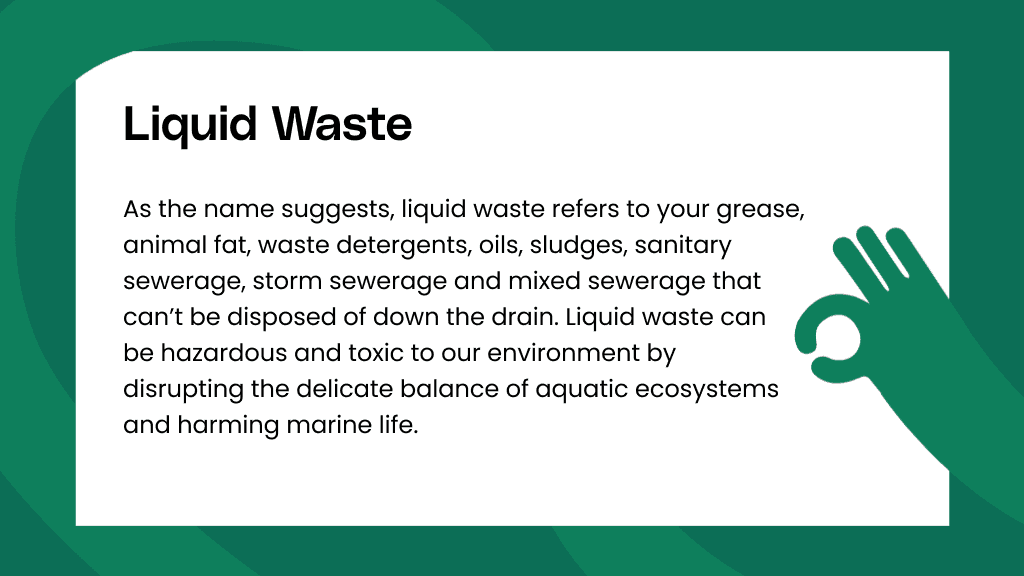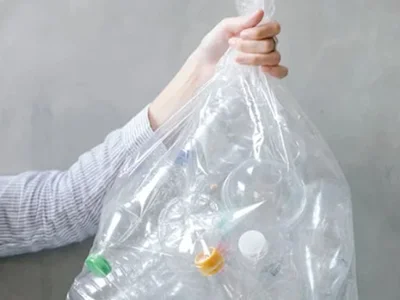Some Known Details About Reclaim Waste
Some Known Details About Reclaim Waste
Blog Article
Rumored Buzz on Reclaim Waste
Table of ContentsThe Definitive Guide to Reclaim WasteReclaim Waste Can Be Fun For EveryoneAll About Reclaim WasteMore About Reclaim WasteThe Facts About Reclaim Waste Uncovered
Residential sewer waste refers to the waste and items from a residential septic tank. The correct administration and disposal of domestic sewage waste need fluid waste to be transferred to a sewer treatment plant where the correct techniques and devices are used to cleanse and dispose of waste.
Business waste often consists of possible threats, such as combustible materials or a combination of liquid and solid waste products, and calls for an extra innovative and in-depth disposal procedure. The disposal of commercial waste normally entails the filtering of waste before transportation to guarantee safe and appropriate disposal. Industrial waste is created from byproducts and runoff of commercial procedures and manufacturing.
This sort of waste can not utilize the same sewage management transportation or processes as septic or industrial liquids. The hazardous waste monitoring process needs the inspection and screening of fluid waste before it goes through the disposal procedure (industrial wastewater treatment). Runoff waste is the liquid waste that originates from runoff and excess stormwater in extremely populated areas or cities
Drainage waste can create contamination and flooding if not taken care of effectively. Making certain correct waste management can prevent disasters and lower environmental injury.
Not known Details About Reclaim Waste
Call PROS Solutions today to find out about our waste management and disposal solutions and the correct methods to take care of the fluid waste you produce.
(http://www.askmap.net/location/7161699/australia/reclaim-waste)This so-called 'wastewater' is not only a crucial resource yet, after therapy, will be launched to our land, rivers or the ocean. Used water from bathrooms, showers, bathrooms, kitchen area sinks, laundries and industrial procedures is recognized as wastewater.

water used to cool down equipment or clean plant and equipment). Stormwater, a kind of wastewater, is runoff that moves from farming and city areas such as roof coverings, parks, gardens, roadways, courses and gutters into stormwater drains, after rainfall. Stormwater moves neglected directly to local creeks or rivers, at some point reaching the ocean.
An Unbiased View of Reclaim Waste
In Queensland, a lot of wastewater is dealt with at sewage treatment plants. Wastewater is transported from domestic or industrial websites via a system of sewers and pump terminals, referred to as sewage reticulation, to a sewer therapy plant. Local governments develop, keep and run most sewer therapy plants. Operators are accredited under the Environmental Protection Act 1994 to release cured wastewater at an acceptable environmental requirement into rivers.
The Division of Natural Resources suggests neighborhood federal governments regarding managing, operating and keeping sewage systems and therapy plants. In unsewered locations, neighborhood federal governments might call for homeowners to install private or household sewage therapy systems to deal with residential wastewater from commodes, kitchen areas, bathrooms and laundries. The Division of Natural Resources authorises using house systems when they are verified to be reliable.
Most stormwater receives no therapy. In some new subdivisions, therapy of some stormwater to eliminate trash, sand and gravel has actually begun making use of gross contaminant traps. Wastewater therapy takes place in 4 phases: Eliminates strong matter. Bigger solids, such as plastics and other objects wrongly released to sewers, are gotten rid of when wastewater is travelled through displays.
Makes use of small living microorganisms recognizes as micro-organisms to break down and eliminate continuing to be dissolved wastes and great particles. Micro-organisms and wastes are included in the sludge.
Not known Details About Reclaim Waste
Nutrient elimination is not offered in all sewage treatment plants since it needs expensive specialist devices. It is ending up being a lot more typical in Queensland. Clear fluid effluent created after treatment might still include disease-causing micro-organisms. If this effluent is released into waterways such as rivers or the sea, the micro-organisms will at some point pass away out.

The majority of wastewater moves into the sewage system. Under the Act, neighborhood governments provide authorizations and licences for environmentally pertinent activities (ERAs) entailing wastewater releases that may have a local influence.
Reclaim Waste Can Be Fun For Anyone
Surveillance provides factual information about water quality and can confirm that licence conditions are being satisfied. The information gotten via monitoring offers the basis for making water high quality decisions.
Report this page